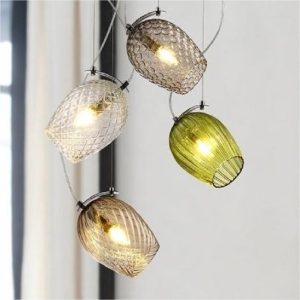Introduction: The Evolution of Furniture Design
Furniture design Glikaw has come a long way throughout history, evolving alongside cultural and technological changes. From the earliest civilizations to the present day, furniture has played a crucial role in human life, providing comfort, functionality, and aesthetic appeal to our living spaces.
In ancient times, furniture was primarily made from natural materials such as wood, stone, and animal hides. The designs were simple and practical, serving basic functions such as seating, sleeping, and storage. As civilizations advanced and cultures developed, furniture design became more intricate and ornate, reflecting the wealth and status of individuals.
The industrial revolution in the 18th century brought about significant changes in furniture design. Mass production techniques allowed for the creation of furniture on a larger scale, making it more accessible to the general population. This period also saw the emergence of new materials such as iron and steel, which revolutionized the construction of furniture.
Creativity and Functionality: The Key Elements of Innovative Furniture Design
Innovative furniture design is characterized by a balance between creativity and functionality. While aesthetics are important in creating visually appealing pieces, practicality should not be compromised. The best designs are those that seamlessly integrate both aspects, resulting in furniture that not only looks good but also serves its intended purpose effectively.
One example of innovative furniture design that prioritizes both creativity and functionality is the modular sofa. These sofas are made up of individual sections that can be rearranged to create different seating configurations. This allows for flexibility in adapting to different spaces and needs. Additionally, modular sofas often come with built-in storage compartments, maximizing functionality in small living areas.
Another example is the convertible coffee table/dining table. This piece of furniture can be adjusted in height to serve as a coffee table or raised to dining table height for meals. This design is particularly useful for those living in small apartments or studio spaces where space is limited.
The Importance of Sustainable Materials in Modern Furniture Design
With the growing awareness of environmental issues, sustainable materials have become increasingly important in furniture design. Sustainable materials are those that are sourced and produced in a way that minimizes harm to the environment and promotes long-term ecological balance.
Using sustainable materials in furniture production has several benefits. Firstly, it helps to reduce the depletion of natural resources. By opting for materials that can be replenished or recycled, we can ensure the longevity of our planet’s resources. Secondly, sustainable materials often have a lower carbon footprint compared to traditional materials. This means that less energy is consumed and fewer greenhouse gas emissions are produced during the manufacturing process.
One example of a sustainable material commonly used in furniture design is bamboo. Bamboo is a fast-growing plant that can be harvested without killing the entire plant, making it a highly renewable resource. It is also strong and durable, making it an ideal material for furniture construction.
From Minimalism to Maximalism: The Diversity of Innovative Furniture Styles
Innovative furniture design encompasses a wide range of styles and trends, catering to different tastes and preferences. From minimalist designs that prioritize simplicity and clean lines to maximalist designs that embrace bold colors and patterns, there is something for everyone.
Minimalist furniture design gained popularity in the mid-20th century with its focus on simplicity and functionality. This style often features clean lines, neutral colors, and minimal ornamentation. It is characterized by its ability to create a sense of calm and order in a space.
On the other end of the spectrum, maximalist furniture design embraces boldness and extravagance. This style is characterized by its use of vibrant colors, intricate patterns, and luxurious materials. Maximalist designs often create a sense of opulence and grandeur in a space.
It is important to embrace diversity in furniture design as it allows for individual expression and personalization. Different styles cater to different tastes and preferences, ensuring that everyone can find furniture that resonates with their unique sense of style.
The Role of Technology in Revolutionizing Home Decor
Technology has had a significant impact on furniture design, revolutionizing the way we interact with our living spaces. From smart furniture that incorporates technology to virtual reality tools that aid in the design process, technology has opened up new possibilities in home decor.
One example of innovative furniture design that incorporates technology is the smart bed. These beds are equipped with sensors and actuators that can adjust the mattress firmness, temperature, and even monitor sleep patterns. This technology allows for a personalized sleep experience, ensuring optimal comfort and support.
Virtual reality tools have also revolutionized the way furniture is designed and visualized. Designers can now create virtual 3D models of furniture pieces, allowing them to see how they will look in a space before they are physically produced. This not only saves time and resources but also allows for more accurate design decisions.
Innovative Furniture Design for Small Spaces: Maximizing Functionality in Limited Areas
Designing furniture for small spaces presents unique challenges. Limited square footage requires furniture that is not only visually appealing but also maximizes functionality and storage options.
One example of innovative furniture design for small spaces is the wall-mounted desk. These desks can be folded up when not in use, taking up minimal space. They often come with built-in storage compartments and shelves, providing additional storage options in small living areas.
Another example is the multi-functional sofa bed. These sofas can be easily transformed into a bed, providing a sleeping solution for guests without taking up extra space. Some designs even come with built-in storage compartments, allowing for additional storage options.
The Impact of Innovative Furniture Design on Health and Well-being
Furniture design has a significant impact on our health and well-being. Poorly designed furniture can lead to discomfort, poor posture, and even chronic pain. On the other hand, innovative furniture designs that prioritize comfort and ergonomics can greatly enhance our quality of life.
One example of innovative furniture design that prioritizes comfort and ergonomics is the ergonomic office chair. These chairs are designed to provide optimal support to the spine, reducing the risk of back pain and promoting good posture. They often come with adjustable features such as lumbar support, armrests, and seat height, allowing for personalized comfort.
Another example is the adjustable standing desk. Sitting for long periods has been linked to various health issues, including obesity and cardiovascular disease. Adjustable standing desks allow users to switch between sitting and standing positions, promoting movement and reducing the negative effects of prolonged sitting.
Customizable Furniture: The Future of Personalized Home Decor
The rise of customizable furniture has revolutionized home decor, allowing individuals to personalize their living spaces according to their unique tastes and needs. Customizable furniture offers a level of flexibility and personalization that is not possible with mass-produced pieces.
One example of customizable furniture is modular shelving systems. These systems consist of individual shelves that can be arranged and rearranged to create different configurations. This allows for flexibility in adapting to different spaces and storage needs.
Another example is customizable upholstery. Many furniture manufacturers now offer a wide range of fabric options for their sofas and chairs, allowing customers to choose the color, pattern, and texture that best suits their style. This level of customization ensures that each piece of furniture is unique and reflects the individual’s personality.
Innovative Furniture Design for Multi-functional Living Spaces
With the increasing trend towards multi-functional living spaces, furniture design has had to adapt to cater to these changing needs. Multi-functional furniture serves multiple purposes, maximizing space and functionality in small living areas.
One example of innovative furniture design for multi-functional living spaces is the storage ottoman. These ottomans not only provide a comfortable seating option but also come with built-in storage compartments. This allows for additional storage space without taking up extra floor space.
Another example is the dining table with built-in storage. These tables often come with drawers or shelves underneath, providing storage space for tableware, linens, and other dining essentials. This eliminates the need for separate storage furniture and maximizes space in small dining areas.
Conclusion: The Future of Innovative Furniture Design and its Impact on Home Decor
Innovative furniture design has the potential to transform home decor, creating spaces that are not only visually appealing but also functional and sustainable. By embracing creativity, functionality, and sustainability, furniture designers can create pieces that enhance our quality of life and contribute to a better future.
As technology continues to advance, we can expect to see even more innovative furniture designs that incorporate smart features and interactive elements. Virtual reality tools will become more accessible, allowing individuals to design and visualize their living spaces with greater accuracy.
Furthermore, the rise of sustainable materials and customizable furniture will continue to shape the future of home decor. With a growing emphasis on eco-consciousness and personalization, furniture design will become more diverse and inclusive, catering to a wide range of tastes and needs.
In conclusion, innovative furniture design has the power to transform our living spaces and enhance our well-being. By embracing creativity, functionality, sustainability, and technology, we can create a future where home decor is not only visually appealing but also environmentally friendly and personalized.
If you’re interested in furniture design, you may also enjoy reading about the work of British designer Tom Dixon. Known for his innovative and modern style, Dixon has made a significant impact on the world of furniture and lighting design. Check out this article to learn more about his unique approach and the pieces that have made him a household name in the industry. (source)


